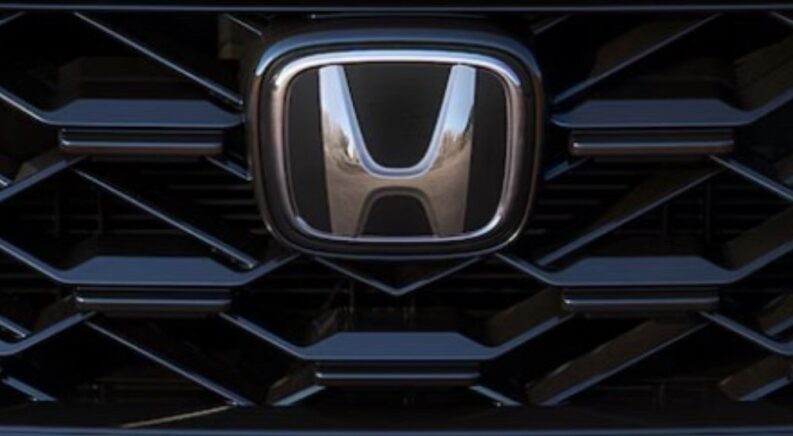Honda might have put a picnic table under the CR-V’s rear cargo area in the late 1990s to add to its quirkiness, but the CR-V has gradually evolved into a sophisticated road warrior. That evolution is apparent at your local Honda dealer, but more so in the CR-V’s power-hungry alter ego––The Beast. Over the last year, Honda has showcased its ingenuity and passion for engineering by building a high-performance CR-V Hybrid Racer as part of a new chapter in IndyCar racing.
With the world turning to more environmentally friendly automobiles, we are seeing more electrification in motorsports, and IndyCar is the latest to jump on the train. As part of the development of a new hybrid powertrain for IndyCar, Honda decided to make an 800 hp racehorse out of the unassuming CR-V. Any questions about hybrid capability on the track have officially been squashed with what Honda calls a rolling test lab that celebrates its racing heritage and ingenuity. So, what’s the secret behind The Beast? Does the hybrid powertrain live up to the hype and meet IndyCar standards? How does it showcase Honda’s ingenuity and success in redefining on-demand power and hybrid performance?
The Design
The Beast looks the part of a souped-up CR-V, but it shares very components with its namesake. With only the windshield taken from the CR-V Hybrid on Honda lots nationwide, the rest of the CR-V Hybrid Racer is a showcase of design ingenuity and a mass of performance-related components. After all, The Beast isn’t a mall crawler but a track-ready racer with an aerodynamic design to match.
The CR-V Hybrid Racer’s design is inspired by the GT racing and Group B rally cars of the 1980s and 1990s, with Honda clothing the prototype in an exclusive wrap designed by its North America Auto Design Division. While the wrap is eye-catching, the elements underneath are even more impressive and lay the groundwork for The Beast’s extreme aerodynamics, which accommodate its penchant for speed and performance. So, what’s hidden behind the scenes?
The Beast features a steel tube chassis that incorporates elements of the CR-V Hybrid’s standard steel body above the beltline; however, the similarities with the CR-V Hybrid end there. The lower half of the CR-V Hybrid Racer features carbon fiber bodywork that incorporates louvered fender flares, an expansive front splitter, a massive rear wing, and butterfly half-cut doors. Its front suspension is taken from the Acura NSX GT3 car, and its rear suspension is from the Dallara IndyCar. With Brembo brakes adding the finishing touch for the ultimate stopping power, the CR-V Hybrid sets the stage for its powertrain to shine in all its hybrid glory.
The Heartbeat
The CR-V Hybrid Racer isn’t your run-of-the-mill crossover SUV or even your typical race car. Instead, Honda ushers in a new era by designing a performance car that runs on renewable race fuel and features a world-leading supercapacitor and hybrid motor. The combination is extraordinary by every measure and begins with what racers are familiar with and know.
The Beast features Honda’s proven IndyCar engine, a 2.2L twin-turbocharged V6, except it now runs on 100% renewable race fuel developed by Shell. Honda pairs the twin-turbocharged heartbeat with the IndyCar XTRAC sequential six-speed transmission with Mega-Line Assisted paddle shift for enhanced, on-demand control. Yet, the real showstopper is the CR-V Hybrid Racer’s hybrid system, with its Empel electric motor and Skeleton Technologies supercapacitors.
Hybrid Performance on the Circuit
Honda’s hybrid system has four primary components, two of which are the Motor Generator Unit (electric motor) and the Energy Storage System. In traditional hybrids, the energy storage system is a lithium-ion battery, but in The Beast, it’s a supercapacitor. So, why the change?
A supercapacitor can’t store as much energy as a traditional battery, but that’s not the priority in a race car. Instead, the priority is dispensing that energy as fast as possible in extreme conditions, giving drivers on-demand power to push their cars to achieve maximum performance. The Beast’s hybrid powertrain guarantees that and much more.
The CR-V Hybrid Racer’s powertrain features 20 supercapacitors designed by Skeleton Technologies, a brand renowned for developing the most advanced energy storage systems in the industry. The Beast’s system of supercapacitors can fully charge and dispense power in less than five seconds. This gives IndyCar drivers the sudden burst of speed needed to pass during a race.
While the supercapacitor stores and dispenses energy, The Beast’s electric motor captures energy for the supercapacitor to store. In traditional hybrids like the CR-V Hybrid, this concept is known as regenerative braking, where the system captures energy when the vehicle brakes and turns it into electricity to replenish the battery and extend the driving range. You can typically activate the process with a paddle on the steering wheel.
The CR-V Hybrid Racer’s regenerative braking process is very similar, capturing energy during hard braking and storing it in the supercapacitors. However, instead of being used to improve fuel economy, that extra energy increases the output of the powertrain. With the system fully charged and engaged, it can add over 120 hp to the vehicle, which makes all the difference on the track.
Drivers Gain More Control
The CR-V Hybrid Racer’s powertrain offers exceptional capability, but it’s also remarkable because it’s engineered to give drivers more control. A performance engine is tuned for maximum output, but a hybrid powertrain and tools like regenerative braking lead some to wonder if the process of recapturing energy is detrimental, especially if drivers don’t have complete control over the system. Honda’s solution is a driver-activated electric motor.
Honda’s hybrid powertrain offers automatic and manual controls that give drivers a say in how and when the regeneration process occurs to perfectly time it with their performance needs. The driver can manually engage the system to increase energy regeneration when the conditions are ideal. Alternatively, the system offers various automatic modes that initiate regeneration based on the brake pressure or throttle thresholds.
A New Chapter of IndyCar Racing
As the world looks to the future of an industry inundated with new electric vehicles that tout on-demand horsepower and torque, Honda takes a notable lead by introducing hybrid capability into the racing circuit. Using The Beast as a four-wheeled laboratory, the CR-V Hybrid Racer has a head-turning design, but its heartbeat is what truly matters most. Honda proves that hybrid powertrains have a place in the IndyCar circuit.
Honda’s hybrid IndyCar powertrain is legions beyond expectations, from its driver-activated hybrid motor technology to its world-leading Skeleton Technologies supercapacitors. The automaker has designed a powertrain that delivers upwards of 800 hp but also gives drivers a say in how that output is delivered and when and how energy is regenerated and dispensed. Because of this, on-demand performance is near instantaneous, which is exactly what drivers expect in an IndyCar.
Looking beyond, The Beast’s hybrid heartbeat also offers hope for the future. While the racing circuit has long relied on gas-powered engines, Honda’s IndyCar hybrid powertrain provides an alternative that welcomes the advancement of hybrid and electric power among racers. It sheds light on a new level of hybrid capability where drivers have more control without compromise. And, with plenty of opportunities for further advancement, the CR-V Hybrid Racer’s heartbeat is just getting started.




